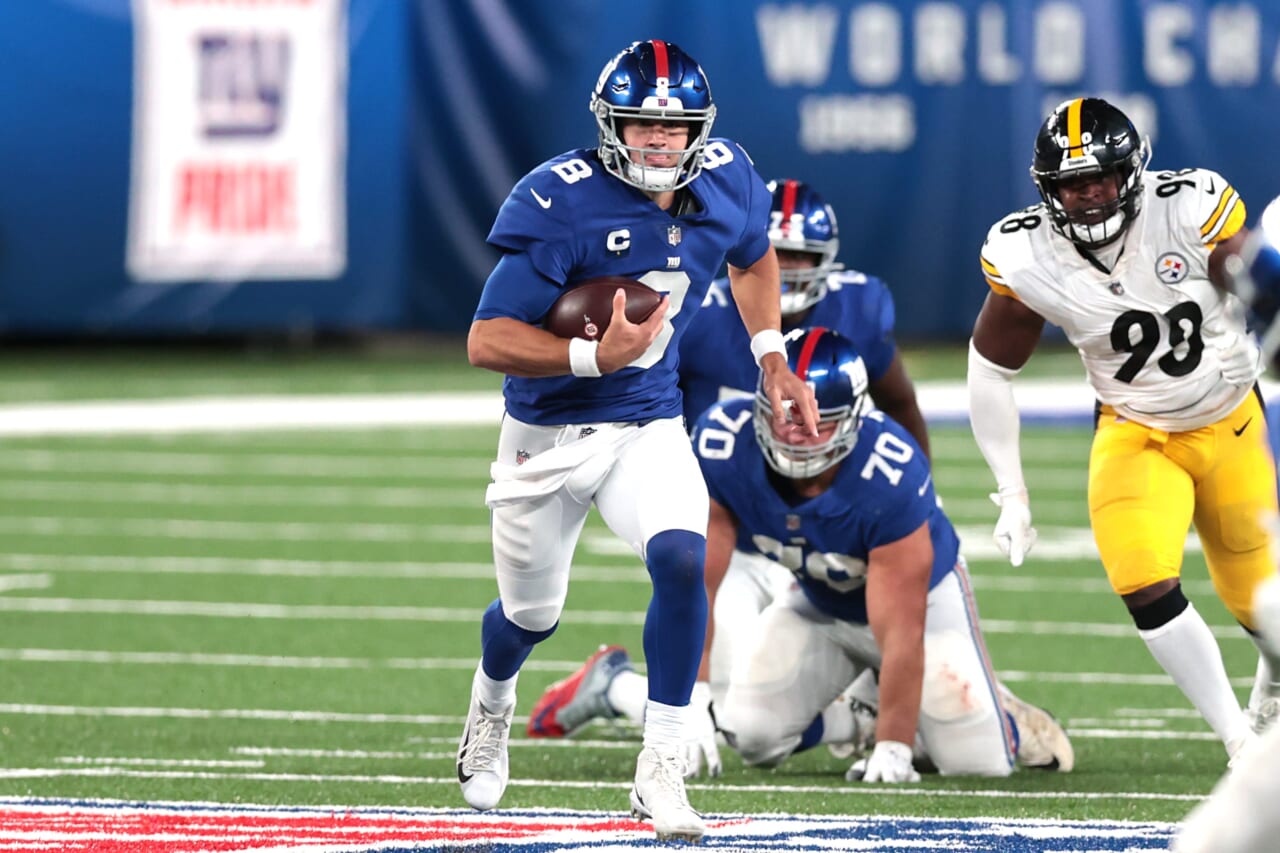
The New York Giants did a tremendous job upgrading the wide receiver unit this off-season, but the offensive line still remains a major question. Of course, I am bullish on the OL taking a step forward and 2021, based on a variety of factors that range from injured players returning to full health and in-person training sessions that will provide more experience and coaching opportunities for management.
When referencing the 2020 season, the Giants were putrid in a number of categories, including points per game, where they averaged a dismal 17.5. They recorded just 189.1 yards per game through the air, which ranked 29th in the NFL.
When looking at the intricate details, you find that Daniel Jones was under tremendous pressure in his second season. Specifically, Jones had just 2.39 seconds in the pocket last season, which ranked 29th in the NFL. His receivers dropped 7.9% of catchable passes, fifth-worst in the NFL, and he was sacked 44 times, fourth-worst in the NFL, per PFF.
At the end of the day, the Giants did very little to support their quarterback in his second year, but they made an exhausting effort to do so this past off-season, acquiring Kenny Golladay, Kadarius Toney, John Ross, and Kyle Rudolph.
The Giants located several weaknesses on their offense and tried to fix those issues. Specifically Evan Engram and his inability to catch passes in the middle of the field. A majority of Engram’s drops came in the 0-10 yard range from the line of scrimmage directly in the middle of the field. In fact, he was a direct result of six interceptions and zero touchdowns in that range.
Considering that inadequacy, the Giants realized they must acquire a tight end who can catch those passes efficiently, which is why they brought on Rudolph, who hasn’t dropped a pass in two years. In addition, he is a stellar red-zone threat at 6’7″ and has 40 career red-zone touchdowns.
Engram performs best when targeted up the seams and on the outside in man coverage. His big frame and speed give him an advantage, and having more weapons on offense should allow him to expose coverage mismatches frequently.
Attacking the seams should be the new mantra for Evan Engram — stay away from the middle of the field and push him vertically, or spray fades to the outside. He must be utilized as a down-field threat, considering all of his drop and correlated turnovers came within 0-10 yards of the line of scrimmage directly in the middle of the field.
The clip below indicates his quality when targeting the seams:
This is how the Giants should be using Evan Engram primarily, never should he be sitting down in the middle of the field dropping footballs and causing INTs.
I want to see EE running the seams and pushing the field. Jones delivers a DIME where only he can get it! pic.twitter.com/ZCw4IFabD0
— Alex Wilson (@AlexWilsonESM) May 17, 2021
Finding a way to maximize Engram’s potential was always a priority, and the Giants finally addressed that issue. Now, they can allow Daniel Jones to utilize his downfield accuracy to capitalize.
Daniel Jones is an adequate deep-ball thrower, especially with solid protection in the pocket and a bit of WR separation. The clip below shows Jones hitting UDFA Austin Mack in stride for a 50-yard gain.
An absolute DIME from Daniel Jones to Austin Mack, because the Giants had so few weapons they were using UDFAs by the midway point through the season.
DJ made it work with what he had, and there's that downfield accuracy. John Ross, Slayton, even Kenny might take this home. pic.twitter.com/t2tV71MhRh
— Alex Wilson (@AlexWilsonESM) May 17, 2021
Overall, the Giants must adopt a downfield approach with their offense, which is the trend across the NFL. However, a lot rides on the adequacy of the OL, which put Jones under frequent duress last year. However, there is a reason to believe that the OL will take a step forward with in-person training and preseason to utilize and iron out their kinks.
If the Giants can claw their way to average next season in the offensive category, they will be a playoff team, given their defense remains consistent. There’s a reason for optimism, but I wouldn’t be opposed to the Giants bringing in a veteran offensive lineman during training camp with some experience at right guard.